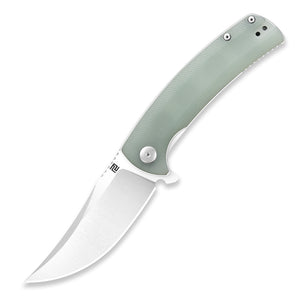Knife flipping, also known as blade flipping or knife spinning, has evolved from a mere hobby to a professional skill that has gained popularity worldwide. This article explores the journey of knife flippers, tracing their evolution from enthusiastic hobbyists to skilled professionals.

The Rise of Knife Flipping
The art of knife flipping has been around for decades, but it gained significant attention in recent years due to the rise of social media platforms. Knife flippers started sharing their impressive tricks and techniques online, captivating audiences with their dexterity and precision. As more people became exposed to this unique skill, the knife flipping community began to grow rapidly.
Knife flipping enthusiasts started forming online communities, sharing tips, tutorials, and even organizing competitions. These platforms provided a space for knife flippers to connect, learn from each other, and showcase their talents. The evolution of knife flippers from hobbyists to professionals can be attributed, in part, to the supportive and collaborative nature of these communities.
The Evolution of Techniques
Over time, knife flippers have developed and refined a wide range of techniques. From basic flips and aerial maneuvers to complex combinations and intricate tricks, the evolution of knife flipping techniques has been remarkable. Professionals in this field continuously push the boundaries, inventing new moves and incorporating elements from other disciplines such as martial arts and dance.
One popular technique that has emerged is the "finger roll." This move involves rolling the knife across the fingers, showcasing both skill and control. Another technique, known as the "helix," involves spinning the knife in a circular motion around the hand. These advanced techniques require hours of practice and a deep understanding of knife dynamics.
The Role of Equipment
The evolution of knife flippers has also been influenced by advancements in equipment. Knife manufacturers have recognized the growing demand for specialized knives designed specifically for flipping. These knives often feature lightweight materials, ergonomic handles, and balanced blades, allowing for better maneuverability and control.
Furthermore, the availability of training tools and accessories has played a significant role in the professionalization of knife flipping. Flippers can now practice with trainers, which are knives with blunt or rounded edges, reducing the risk of injury during training sessions. Additionally, trainers often have a different weight distribution, helping flippers master new techniques before attempting them with a live blade.
The Competitive Scene
As knife flipping gained popularity, it naturally led to the emergence of competitive events. These competitions provide a platform for knife flippers to showcase their skills and compete against fellow enthusiasts. The competitive scene has further fueled the evolution of knife flippers, as participants strive to outperform each other and push the boundaries of what is possible.
Professional knife flipping competitions often include categories such as speed flipping, freestyle routines, and technical challenges. Judges evaluate the difficulty, execution, and creativity of the flips, adding an element of subjectivity to the scoring process. These competitions not only provide recognition and prestige to the winners but also inspire others to improve their skills and contribute to the evolution of the sport.
In conclusion, the evolution of knife flippers from hobbyists to professionals has been a fascinating journey. The rise of online communities, the development of new techniques, advancements in equipment, and the competitive scene have all contributed to the growth and professionalization of this unique skill. As knife flipping continues to evolve, we can expect even more impressive tricks and innovations from the talented individuals in this field.






